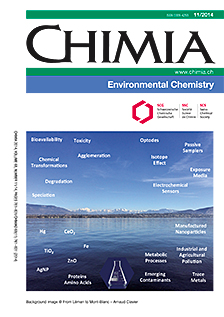Environmental Photochemistry of Amino Acids, Peptides and Proteins
DOI:
https://doi.org/10.2533/chimia.2014.812Keywords:
Amino acids, Environmental fate, Natural organic matter, Photochemistry, ProteinsAbstract
Amino acids, peptides and proteins are central building blocks of life and of key importance in the biogeochemistry of aquatic ecosystems. In sunlit surface waters, amino acid-based molecules at different levels of structural organization are susceptible to transformation by both direct photochemical reactions and indirect processes caused by photochemically produced reactive oxygen species (e.g. hydroxyl radical or singlet oxygen). Photochemical transformation processes can thereby affect the availability of these crucial nutrient sources in aquatic ecosystems, inhibit the function of microbial extracellular enzymes, or even promote the degradation of amino acid-based pollutant molecules. In this article, the environmental photochemistry of amino acids, peptides and proteins in aquatic systems is reviewed.Downloads
Published
2014-11-26
Issue
Section
Scientific Articles
License
Copyright (c) 2014 Swiss Chemical Society

This work is licensed under a Creative Commons Attribution-NonCommercial 4.0 International License.
How to Cite
[1]
Chimia 2014, 68, 812, DOI: 10.2533/chimia.2014.812.







